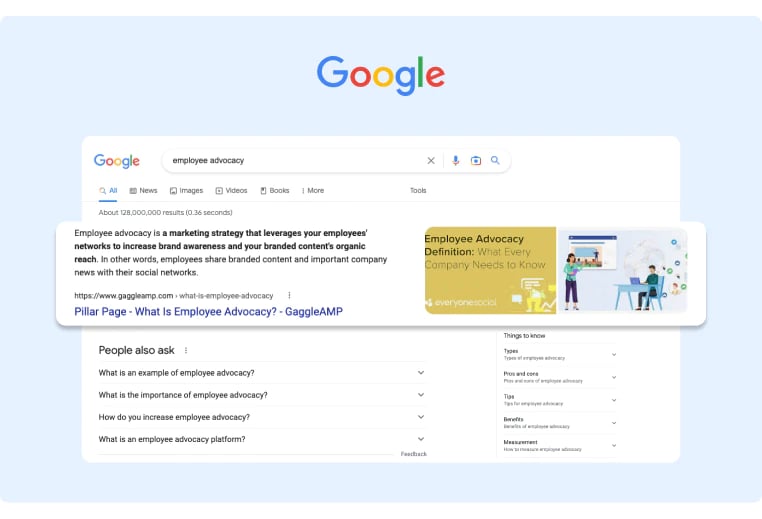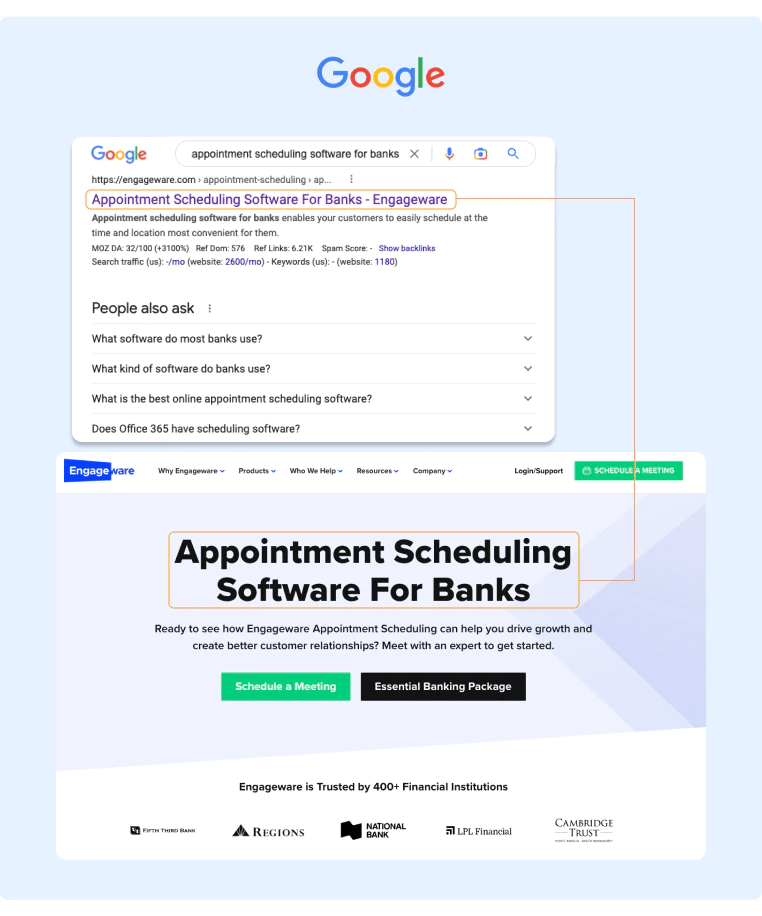How Strategic SEO Can Increase Brand Awareness
What do Disney, Starbucks, and Fisher-Price have in common? The answer: strong brand awareness. Brand awareness fosters trust, creates association, and builds brand equity (e.g., value). Not only are these brands easily recognizable by name and logo, but consumers are also more likely to purchase them.
Capturing the attention of consumers in a competitive market is every brand’s goal. But how do you increase brand awareness for your company? To get more eyes on your products or services, strategic search engine optimization (SEO) can help increase your brand awareness. After all, SEO is one of the most powerful tools you have at your disposal to grow your business.
Read on to find out how strategic SEO can help, plus five ways you can use SEO to build brand awareness.
Does SEO Help Brand Awareness?
SEO not only improves your website’s visibility in search engines (e.g., Google), it helps brand awareness, too. The higher you rank in a search engine, the more visible you are when people search keyword terms relevant to your brand. Higher visibility means more organic traffic to your website. More traffic means more eyes on your brand, which will increase your brand awareness.
Google’s top SERP positions are given to the site pages that demonstrate the most authority and relevance for the keyword(s) being searched. Ranking on Google’s first page is the dream goal for businesses looking to stand out in an increasingly competitive market. By occupying a top SERP position, companies become more recognizable and memorable. And that’s not the only benefit.

Ranking near the top of a search engine results page (SERP), or as the featured snippet, is also a form of social proof. Social proof boosts your credibility and trustworthiness, two things that play a major role in brand trust. Think back to why Starbucks has strong brand awareness... people trust, associate, and value their brand.
So, now that we know that SEO can increase brand awareness, let’s explore how we can use SEO to boost brand awareness.
Five Ways SEO Can Build Brand Awareness
By optimizing certain elements of your website, you can increase your rankings and build brand awareness. Here are five ways to strategically use SEO to increase brand awareness.
1. Determine Your Target Audience
Who is your ideal customer? Get into the mindset of your target customer and determine what their pain points are and why they might be needing help. Then create a profile (or persona) of your target customer. This will help you when it comes time to perform keyword research and create optimized content because you know exactly who you will be targeting.
As the adage goes: imitation is the sincerest form of flattery. While there is an element of truth to this, when talking about SEO, you should take it with a pinch of salt. Don’t mimic your competitors exactly, but take influence from what they’re doing, or what they’re arguably not doing.

You should take the time to consider who your true business competitors are, as well as those that may simply be an “SEO competitor.” Taking the time to do proper competitor research can give you an idea of the content opportunities that exist and what keywords you could target. Speaking of which…
2. Perform Keyword Research
Choosing the right keywords to optimize your content is key. You want to identify relevant keywords and long-tail keywords your target audience is searching for. This is where search intent comes into play.
Search intent is the reason (or the “why”) behind a search query. Search engines like Google provide relevant results for queries, so you want to create content that aligns with your audience’s search intent.
There are four types of keyword search intent. They are:
- Informational: Looking for information.
- Navigational: Looking for a specific website.
- Commercial: Looking for reviews and comparisons.
- Transactional: Looking to make a purchase.
By looking at search intent, you can determine what type of keywords you need to target and the type of content you need to create to answer the query. (More on content in a second)
For example, are your customers looking for types of digestible tablets (e.g., chewable, dissolvable, etc.) or types of electronic tablets (e.g., iPad, Surface Go, Galaxy) to buy? Targeting your audience with just the keyword “tablet” will be too broad. Here, you need to determine which audience you’re targeting and consider using long-tail keywords to target them.

3. Create Optimized Content
Once you’ve selected your target keywords, it’s time to create SEO optimized content for your website. The content should be high quality and valuable. More importantly, your quality content should address your audience’s needs. This could be answering questions, offering industry insight, or engaging pieces. Your content can also be in the form of blogs, case studies, podcasts, webinars, videos, e-books, and even infographics.
As you create your content, avoid threading too many keywords (a.k.a. keyword stuffing) into your content. Too many keywords can come across as spammy. You can use your content to educate, while subtly promoting your products or services, too. This will help your users (and Google) understand what your brand does, how your brand adds value, and ultimately, drive brand awareness.
4. Use Link Building Strategies
Strategic link building is crucial for building brand awareness. By creating “backlinks” from another website back to yours, you’re boosting the visibility of your website on search engines. It also tells Google that your website is important enough that it’s linked to third-party sites.
However, where your brand is linked to matters. Some links can be harmful and affect your chances of achieving a high ranking. Always check the Domain Authority (DA) of the referring site.
Link building strategies can include broken link building (e.g., replacing a broken link with a working link to your content), building citations, claiming unlinked brand mentions, guest blogging, etc.
Internal linking, or how you link your pages to other pages on your site, matters, too. It helps Google understand the content you are creating and how it relates to other content on your site. There are several strategies that can be used, depending on your knowledge of SEO and depth and breadth of content. If you have never considered a strategy for your internal linking, we’re a fan of silos.
5. Integrate With Other Marketing Channels and AI Tools
Integrating your SEO efforts with other marketing campaigns such as Google Ads, email marketing, and social media marketing can do wonders at enhancing your brand awareness. While this might require additional time, resources, and budget, your content can be seen by significantly more people and you may end up reaping serious benefits as a result.
For example, social media can work harmoniously with SEO efforts acting as an excellent place to share targeted content through personalized, interactive ads that appear in front of people who don’t know what your business does. Together these two tools can help your brand awareness grow substantially. Another tool that has piqued the interest of marketers is AI.
Organic traffic is vital to increasing your brand awareness, but the biggest challenge facing marketers is the competitiveness of the search landscape. Therefore, marketers have to work extra hard to stand out in an overcrowded digital sphere. In an effort to optimize their SEO (and save time/resources), there has been interest in adopting AI tools such as ChatGPT to optimize SEO and bolster digital marketing efforts. But proceed with caution, warns Justin Aldridge, Technical Director.
Aldridge explains that while AI tools deliver quick, easy answers and helpful advice on tap, the content quality can be poor. There is the potential that Google will potentially see AI’s generated content as spam.
But according to Aldridge, don’t count AI out just yet. There are rumors that Google will preview its own AI chat alternative, possibly solving the biggest problem that ChatGPT has: it doesn’t know if the text it spews out is correct and it doesn’t cite its sources.
Final Thoughts
SEO and brand awareness can be the perfect counterpart to one another. They don’t have to exist in silos. If you want to see your brand awareness and organic traffic grow simultaneously, you should consider a strategic approach to using SEO to increase brand awareness.










